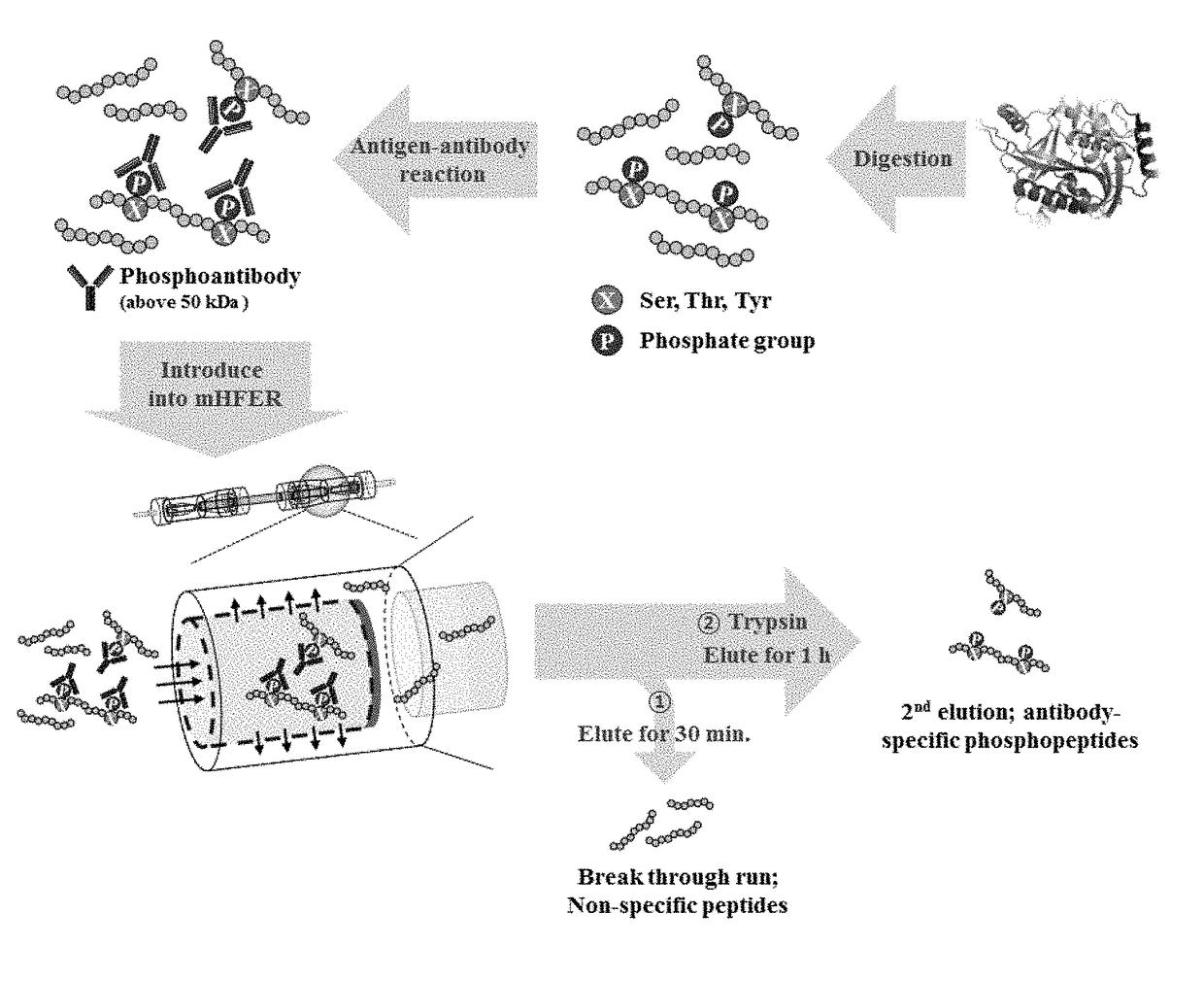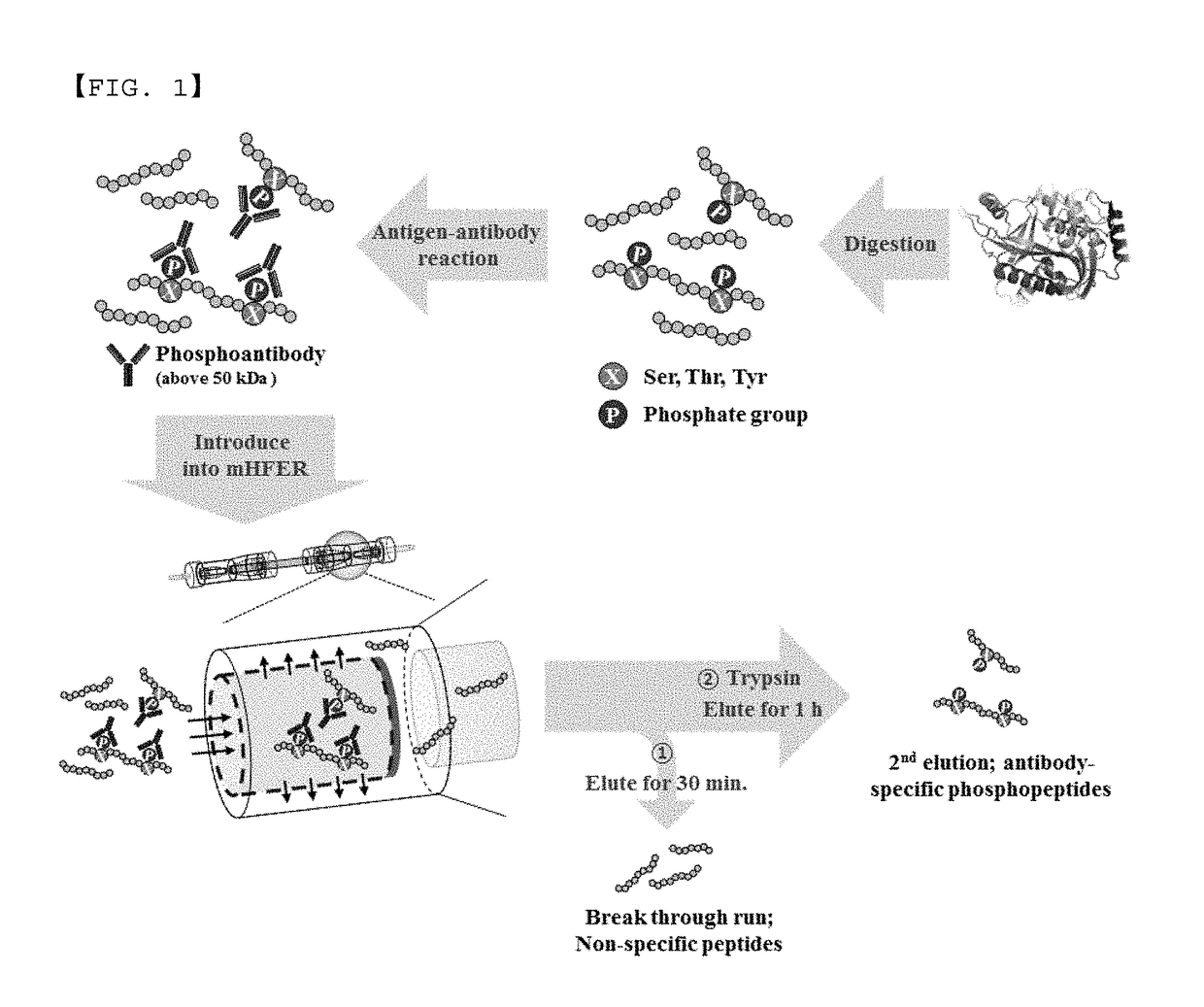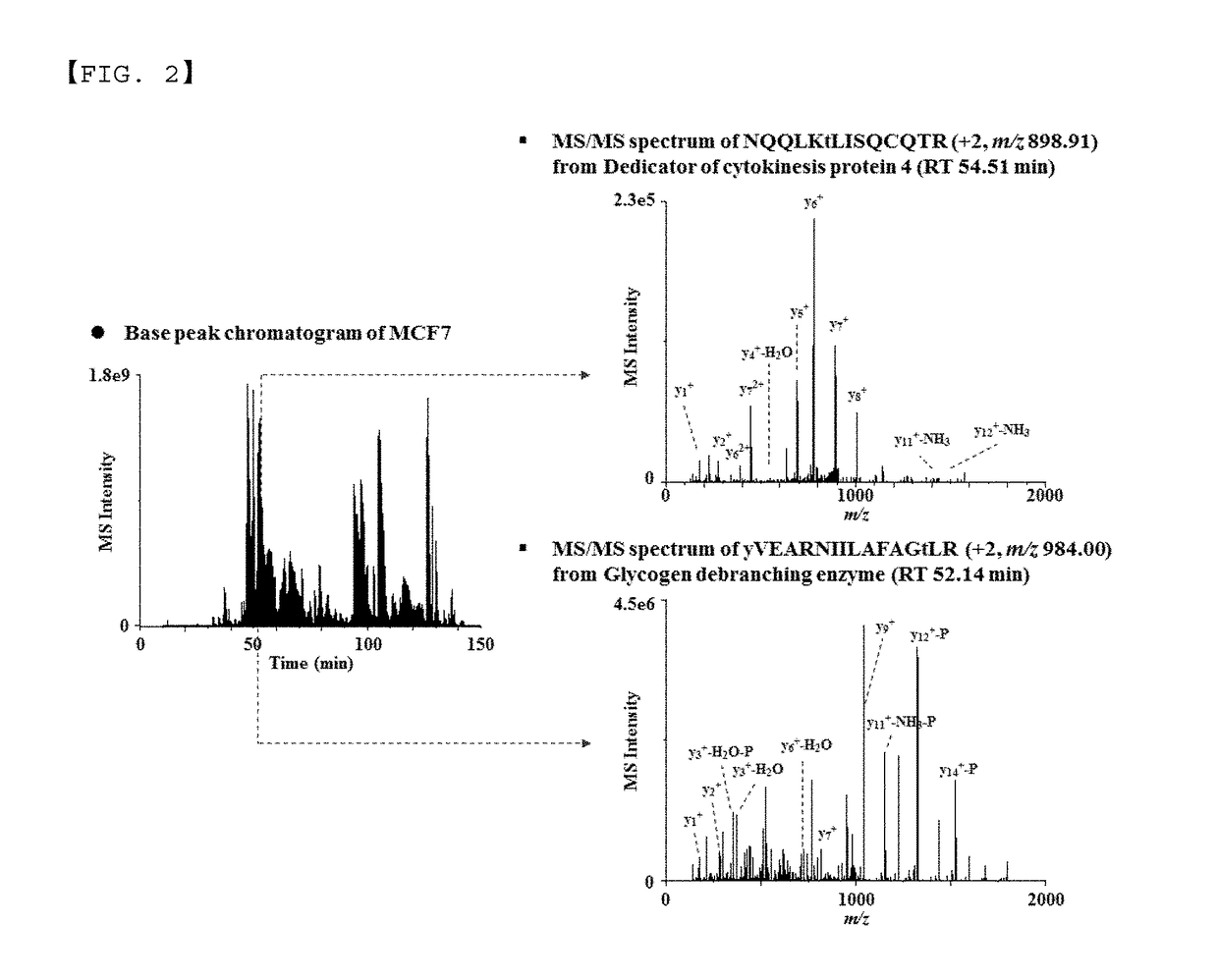Monoclonal antibody based online phosphoprotein proteomics analysis method using microbore hollow fiber enzymatic reactor-tandem mass spectrometry
a phosphoprotein and enzymatic reactor technology, applied in particle spectrometer methods, post translational modification detection, instruments, etc., can solve the problems of difficult qualitative and quantitative analysis of phosphopeptides, low esi efficiency, and relatively small amount of phosphoproteins, so as to efficiently extract antibody-specific phosphopeptides, the effect of minimizing problems
- Summary
- Abstract
- Description
- Claims
- Application Information
AI Technical Summary
Benefits of technology
Problems solved by technology
Method used
Image
Examples
experimental example 2
Phosphopeptide Mass Spectrometric Method
[0020]In the online microbore hollow fiber membrane enzymatic reactor (mHFER), a pump which is adjustable to a flow rate of 1 to 10 μL / min or less and a sample injector (or autosampler) with which a sample is online injectable are connected to an inlet of the hollow fiber membrane, for transfer and injection of the antibody-binding peptide or enzyme. One side of the microbore hollow fiber membrane (mHF) used in the mHFER is blocked using epoxy so that the flowing path of flow passes only in the inner wall, and the permeation limit of the mHF is 10 kDa, having a volume of about 5 μL.
[0021]After injecting the antibody-binding peptide mixture prepared in Experimental Example 1 to the mHFER, 0.1 M PBS was flowed at a flow rate of 1 to 5 μL / min for 30 minutes to 1 hour. After removing peptide having a size less than 10 kDa, unbound to antibody in the mixture via the process, a reverse phase trapping column was installed on the outlet of the hollow ...
experimental example 3
Efficiency Measurement According to Phosphopeptide Extraction
[0026]After enzyme-treating the protein obtained from the MCF7 cell lysate, the extraction efficiency of phosphoprotein by the previously reported extraction method of phosphopeptide [filter aided sample preparation (FASP), immobilized metal affinity chromatography (IMAC), titanium dioxide (TiO2)] and that by the present invention were compared, using 10 μg of the peptide mixture.
[0027]FASP Extraction Method
[0028]In FASP, 10 μg of the peptide mixture and 10 μg of antibodies were reacted, and transferred to a centrifugal filter having a permeation limit of 10 kDa, and 200 μL of 0.1 M PBS was added and mixing was carried out, and then centrifugation was carried out at 14,000×g for 10 minutes. This process was repeated twice to remove the peptides unbound to antibodies, and 0.2 μg of trypsin (antibody:enzyme=50:1, w / w) was added and reacted at 37° C. for 18 hours. 200 μL of 0.1 M PBS was added to the enzyme-treated mixture an...
PUM
| Property | Measurement | Unit |
|---|---|---|
| Temperature | aaaaa | aaaaa |
| Percent by mass | aaaaa | aaaaa |
| Percent by mass | aaaaa | aaaaa |
Abstract
Description
Claims
Application Information
 Login to View More
Login to View More - R&D
- Intellectual Property
- Life Sciences
- Materials
- Tech Scout
- Unparalleled Data Quality
- Higher Quality Content
- 60% Fewer Hallucinations
Browse by: Latest US Patents, China's latest patents, Technical Efficacy Thesaurus, Application Domain, Technology Topic, Popular Technical Reports.
© 2025 PatSnap. All rights reserved.Legal|Privacy policy|Modern Slavery Act Transparency Statement|Sitemap|About US| Contact US: help@patsnap.com



